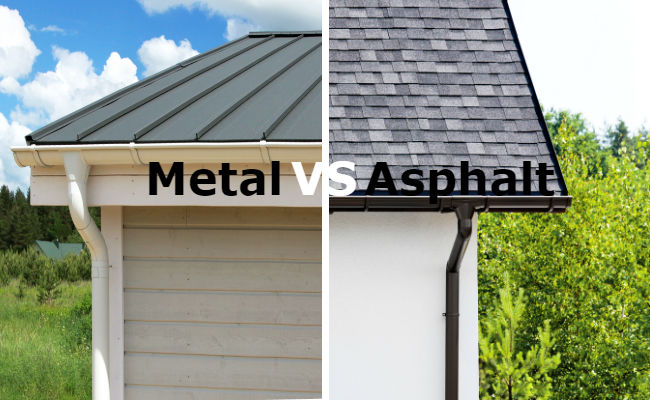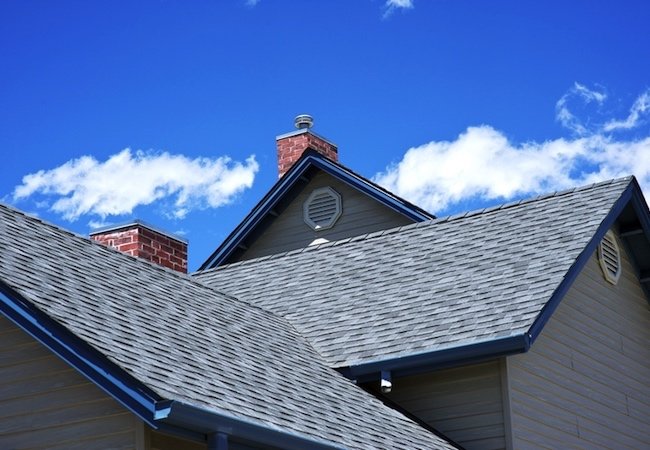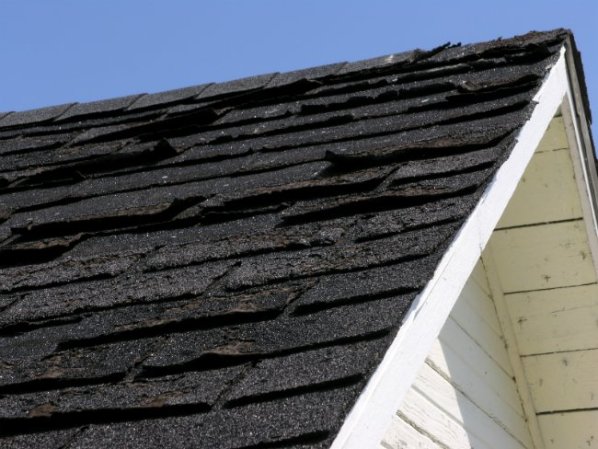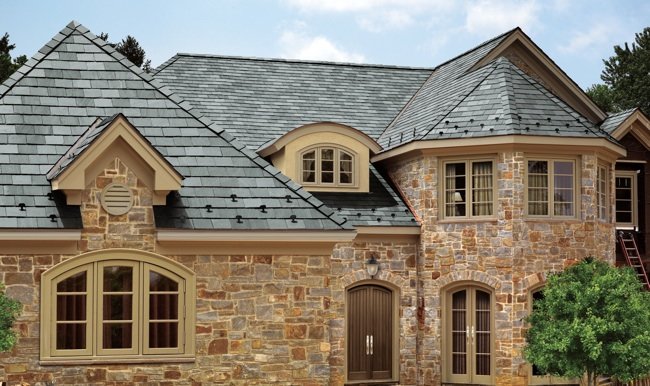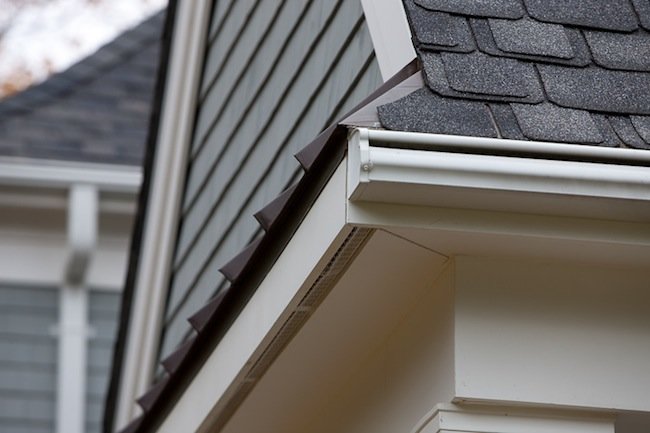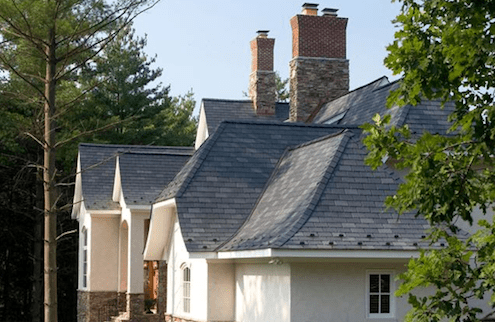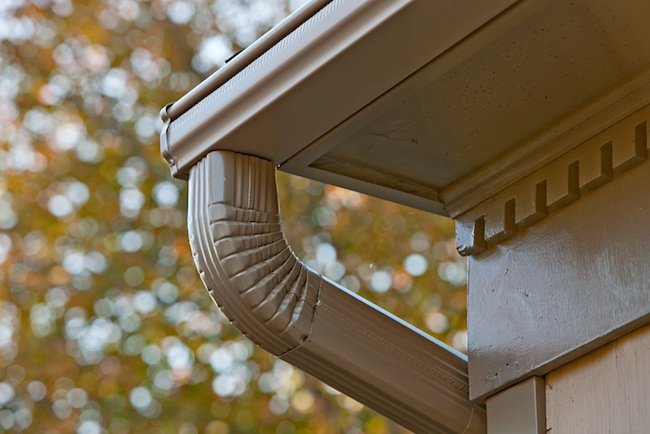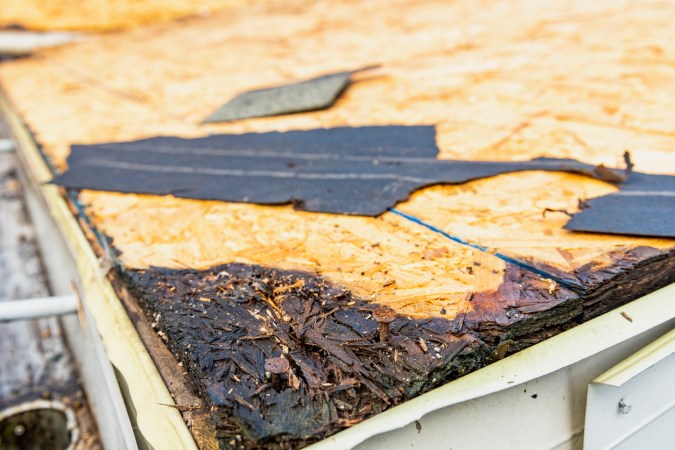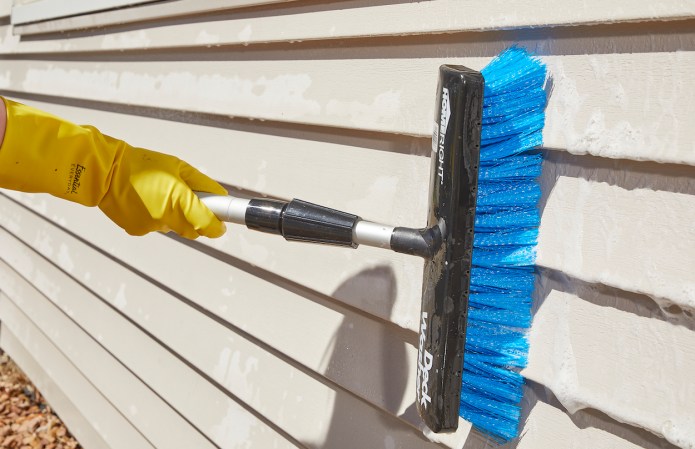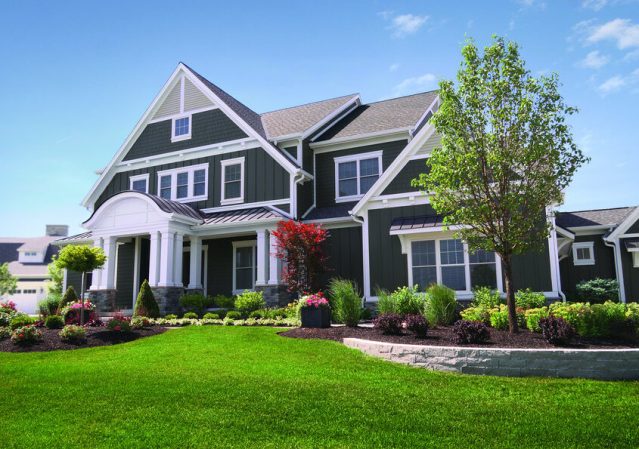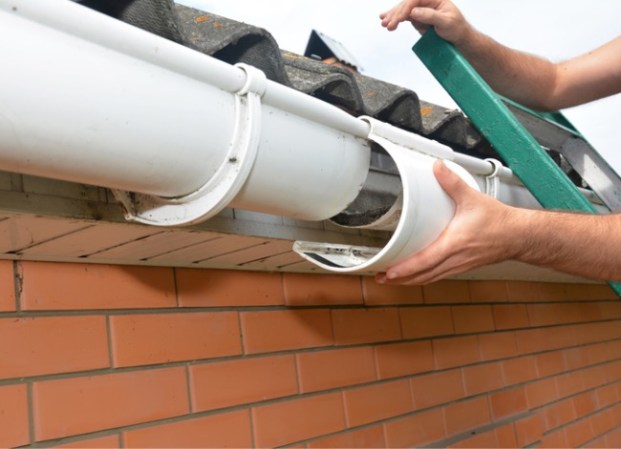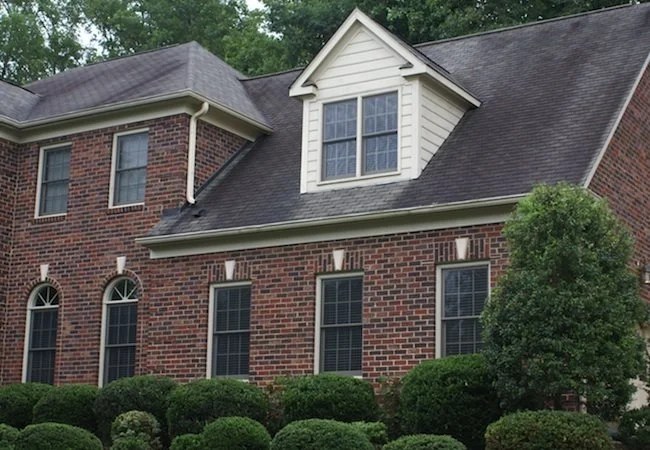We may earn revenue from the products available on this page and participate in affiliate programs. Learn More ›
Choosing a new roofing material can be tough. It’s an expensive home update, and the variety of residential options for asphalt and metal can be a challenge to navigate. Since there are about 5 million roof replacements in the United States each year, there are plenty of homeowners weighing this essential decision.
“A roof is one of the most integral parts of a home, as it is one of the most critical lines of defense against protecting it from the elements,” says Eddie Prchal, CEO and co-founder of Stamford, Connecticut–based Gunner Roofing. “Just like any part of a home project, you have to weigh the pros and cons to make the right decision for you.”
For decades, asphalt shingles have been known for their reliability, cost-effectiveness, and ease of maintenance, and asphalt roofs are on about 80 percent of U.S. homes. However, their popularity is starting to wane. Shipments of asphalt roofing products declined more than 20 percent between 2022 and 2023, according to the Asphalt Roofing Manufacturers Association. The number of homeowners choosing metal roofing has been on the rise since 2015, with metal roofing doubling in popularity in just 4 years to now claim about 12 percent of the remodeling market share.
Factors such as aesthetics, eco-friendliness, home safety in extreme weather, and budget all come into play when it’s time to replace a roof. If you’re weighing metal roof vs. shingles pros and cons, here are some things to consider to help you make the right choice for your home.
Both materials have finish options for every housing style.

Today’s shingle roofs can mimic the look of slate, wood shakes, and tile. You can find shingles with scalloped edges for Queen Anne homes or those that have a terra-cotta look appropriate for a Mediterranean style. A wide-ranging color palette and a host of finish options (from slightly weathered, which can complement older homes, to subtly multicolored) can suit many home styles.
“Some of the innovation in the manufacturing of asphalt roofing mimics the appearance of more expensive roofing materials, which can be appealing for homeowners looking for that aesthetic,” Prchal says. “Metal roofing has seen a surge in popularity, as homeowners and builders both appreciate its durability, longevity, and resistance to natural elements. Manufacturing advances have led to a wider variety of styles to make it more visually appealing.”
Traditionally, metal roofs were made of corrugated tin panels (called standing-seam metal) that evoke images of barns or sheds. But metal roofing—also in zinc, aluminum, galvanized metals, and even copper—has come a long way from the farm.
These days, you’ll see metal roofing that suits less rustic, more refined, and modern structures, from contemporary homes in California to coastal communities on the East Coast. Metal comes in a spectrum of colors and finishes, and in shingle, slate, and shake styles. Because you can likely get the look you want from either metal or asphalt shingles, don’t let appearance be the deciding factor; instead, choose the material that will perform best for you.
Metal roofs tend to be more durable.

Metal roofs can stand up to nearly anything Mother Nature throws at them. You’ll find that they come with 30- to 50-year warranties, and many often outlast that with lifespans of 40 to 70 years. Metal roofs are not without weaknesses, however: Extreme hail or falling branches could dent a metal roof, as could walking on it improperly. Discuss vulnerability concerns with a representative from the manufacturer. You’ll learn, for example, that steel is hardier than copper.
Shingles have their own unique weaknesses, along with a shorter lifespan. Pooling water and chronically damp conditions can lead to algae and fungus growth; ice dams can create cracks; and temperature spikes between day and night can reduce the life of a shingle roof. Shingle roofs come with 15- to 30-year warranties, depending largely on the region, environment, and climate.
No matter whether you choose asphalt shingles or metal roofing, proper roofing installation will help you get the maximum lifespan and protection for your home. “Like most home projects, make sure to hire qualified experts who guarantee their workmanship to avoid issues, especially when it comes to your home’s roof,” says Ben Thacker, vice president of business development at Emporia Energy, a company that specializes in home energy management that’s located in Littleton, Colorado.
Shingle roofs are cheaper up front.
Though you’ll get more life out of a metal roof, you’ll pay the price at the time of installation. Metal roofs generally run from $400 to $3,000 per 100 square feet (one 10-by-10-foot area, or a “square” of material), while standard asphalt shingles usually cost between $60 and $90 per square. Architectural asphalt shingles are about $200 to $400 per square. Typically, metal roof installation will also cost more since it’s a specialized job.
“Installing a metal roof can also increase your home’s value,” says Prchal. “This is because metal roofs are a highly desirable feature for home buyers, who are willing to pay more for homes with durable, long-lasting roofs.”
However, when considering metal roof vs. shingles cost, remember you might recoup some of the costs of a metal roof down the road since you likely won’t ever have to replace it. Insurance companies may offer discounts to homes with metal roofs, and you might even qualify for tax credits by installing a metal roof on your primary home. Another benefit of metal roofs is that they are so energy efficient they can save you money in monthly heating and cooling costs.
“A metal roof should lower insurance premiums, especially if the roof is Class IV rated,” says Jason Gibson, owner of Storm Guard Roofing and Construction in Austin, Texas. “However, a Class IV asphalt shingle should result in lower premiums than a regular asphalt shingle roof. Most insurance companies offer a premium discount for hail-resistant shingles in the neighborhood of 10 to 15 percent.”
Metal roofs are more eco-friendly.
Because they’re largely made of recycled material and can be recycled again and again, metal roofs are considered a more sustainable choice than asphalt shingles. Metal roofs are also more energy efficient thanks to their reflective qualities, which can block heat transmission to the home’s interior. Specialized paint coatings on the metal can further reduce a home’s cooling bills.
Asphalt shingles, on the other hand, need more frequent replacement than metal roofs. While some old asphalt shingles are now being reused for paving roads, 12 million tons of old asphalt shingles are still ending up in U.S. landfills annually. Another consideration is that asphalt shingles are a petroleum-based product, which increases dependency on fossil fuels.
PRO TIP
“Metal roofing is recyclable and a good substrate for rainwater collection. So, for the more environmentally conscious homeowner, it can be a desirable option. Metal roofing can have a higher solar reflectivity, especially with lighter colors, resulting in a cooler attic space and lower electric bills.”
—Jason Gibson, Owner of Storm Guard Roofing and Construction
Asphalt shingle roofs generally are easier to install and repair.

For pros, installing an asphalt shingle roof requires little specialized knowledge and just some basic tools. Shingles can be installed in a day or two in some cases, and sometimes right over the existing layer. Metal roofing installation typically requires a more skilled and specialized tradesperson.
A metal roof installation is more precise, with less room for error, so it won’t move as quickly as a shingle installation. However, some lightweight metal products may be installed right over an existing roof that’s in good condition, simplifying installation overall and eliminating the cost of ripping out the original roof.
PRO TIP
“Quality metal roofs are very easy to clean, typically only requiring a squirt of water and gentle soap to remove rooftop grime. Other materials such as asphalt, shake, and clay may require more expensive professional cleaning and the use of harsh, environmentally harmful chemicals to remove stubborn dirt and to prevent issues like moss from taking hold.”
—Renee Ramey, Executive Director of the Metal Roofing Alliance (MRA)
However, repairs are easier for shingles than for metal roofing. Though roofing manufacturers don’t recommend DIY repairs—you could likely void the warranty—asphalt shingles are easier to work with than metal ones, since they can be cut down to size and fitted to the roof with little difficulty. Metal roofs are harder to replace individually due to the way the metal panels join together, and they typically require a retrofit of an entire panel.
Metal roofs are more compatible with solar installations.

If the goal is to incorporate solar panels into the new roof, metal roofing makes installation and integration of solar panels easier. The construction of metal roofing makes it easier to attach solar panels than on an asphalt roof.
“A metal roof’s main benefit is that they allow solar panels to be attached to the standing seam and do not require the installer to make penetrations into the roof,” says Thacker. “Penetrations are required to attach solar panels and supports to shingled roofs.”
Nationally, about 4.4 percent of single-family homes have solar power systems, and 68 percent of roofing industry professionals expect the interest in solar to continue.”Metal is the better choice for a solar system, as it should outlast the lifespan of the system—typically 25 to 30 years,” says Gibson. He adds that a solar system might outlive the life of an asphalt shingle roof.
However, if solar is in the plans for your home, make sure the roof is in excellent shape before getting started. “If your roof is old, has damage, or needs to be replaced, it is best to get it corrected prior to going solar,” says Thacker.
Homeowners associations typically require asphalt shingles.

Homeowners associations can be strict with their guidelines for the colors, materials, and sizes of home elements, and it can be difficult to navigate exceptions to the rules. Asphalt shingles are often the choice for homeowners associations.
“For a home in an HOA community, an asphalt shingle may be the only approved roofing option,” says Gibson. “Asphalt shingles are going to have a lower up-front cost, so if the budget is limited, it may make more sense.”
Metal roofing performs better in most types of extreme weather.
Extreme weather is on the minds of many people these days, which is why choosing the right roof to help protect your home from severe weather is essential. It’s critical to have an understanding of how asphalt shingles vs. metal roofing can perform during wildfire, hurricane, flood, tornado, and hail events.
Wildfire
“An ignition-resistant roof is key to wildfire home protection,” says Renee Ramey, executive director of the Metal Roofing Alliance (MRA . “Flying embers from a wildfire can destroy a home up to a mile away, and a roof is one of the most vulnerable areas.”
If you’re weighing the benefits of a metal roof vs. shingles in hot climates and wildfire-prone areas, it’s important to know that no roof is completely fireproof. Typically, asphalt shingles can withstand fire for up to 2 hours before igniting. The National Fire Protection Association rates fire-resistant roof coverings as Class A, B, C. Class C is the least resistant and includes shakes and shingles. Class A provides the top performance; it includes metal, concrete, and clay.
“For wildfires, the biggest risk is embers getting into the attic, causing a fire,” says Gibson. “If the roof has a ridge vent system that is Class A fire rated, this risk is minimized.”
Hail
While metal roofing can withstand the impact of hail, it will likely dent. These dents and dings are usually just cosmetic and not structural. Still, asphalt might be the better choice in hail-prone locations.
When choosing a roof with hail risks in mind, make sure the roof material has a Class 4 UL 2218 impact rating to ensure it’s protected from hail damage or storm debris. To achieve this rating, roof materials are tested by having a 2-inch steel ball repeatedly dropped from 20 feet above. After assessing the results, the tester gives the roof product a rating from Class 1 to Class 4. If there are no signs of fracture, the roof receives a Class 4 rating.
Tornado
Homes located in tornado-risk areas benefit from the protection that a metal roof can provide. Metal roofs can withstand up to 140 mile per hour winds, minimizing the risk of damage during a tornado. Many homeowners look to roofing materials that meet the nation’s strictest building codes—Miami-Dade County—when choosing a roof in a tornado- or hurricane-prone area.
“When installed properly, quality metal roofs are rated to stand up to F2 tornado wind speeds, resist leaks, and [they] are much less likely to puncture, tear, or crack due to flying debris or massive hailstones,” says Ramey.
It’s wise to check a roof routinely no matter the material. Intense wind can lift compromised shingles, and then the whole roof system is compromised. Plus, asphalt shingles are more likely to split, crack, or loosen after extreme weather conditions.
Hurricane

During a hurricane, wind-driven rain is a major concern. Eliminating opportunities for wind and rain to enter the home through the roof is imperative to prevent mold and expensive water damage.
“For hurricane-prone areas, metal roofs are most often recommended due to their durability and wind resistance. Standing seam metal roofs are especially resistant to high winds,” says Prchal.
Also, consider a roof that has passed the TAS-100 test, which involves spraying 8 inches of rain per hour on a roof material to find out if it can prevent rain from penetrating the roof deck underneath. Areas that are at risk for hurricanes are along the coast, which adds concerns like moisture and salt. A home that’s protected with galvanized steel roofing with a zinc-aluminum coating can better resist these adverse marine conditions.
Flood
Flooding is another extreme weather concern that might not come to mind immediately for those who are thinking about a new roof. However, flooding can consume entire structures, including the roof. For coastal homes and homes in areas with severe flooding risks, it’s usually best to consider a metal roof.
“In flood-prone areas, metal roofing, concrete tiles, and certain synthetic materials will resist water damage better than traditional asphalt shingles or wood,” says Prchal. “However, the primary concern in flood-prone areas is not just the type of roofing material, but also the elevation and design of the entire structure,” he says.
3D-printed roofs are neither metal nor asphalt…yet.
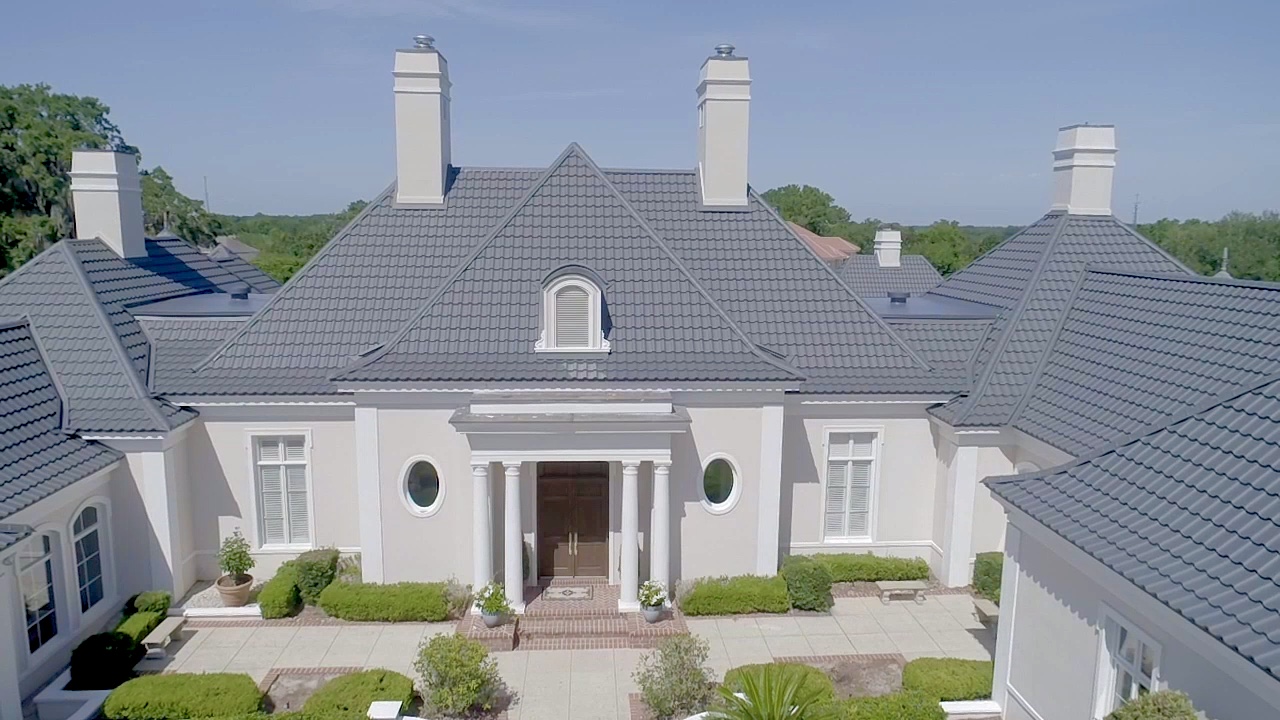
Called additive construction, 3D-printed homes have been a much-talked-about subject among residential construction pros. And while 3D printers can print metal and asphalt, they haven’t yet started printing full roofs in either material. Typically a 3D-printed home still has a roof made of traditional materials, except in developing countries.
Since access to building materials is more difficult in some nations, 3D-printing technology is being used to create roofing from recycled plastic that resembles terra-cotta tiles. It’s a less expensive material and it performs well, too. Still, 3D-printed metal or asphalt roofing might be a new option on the horizon. According to the roofing industry, 57 percent of roofing companies are looking into 3D printing.
About the Author
Theresa Coleman Clement is a residential design and construction writer. As a home designer, certified color expert, and Certified Aging-in-Place Specialist (CAPS), she shares remodeling and design how-to and inspiration to help homeowners create savvy and sustainable remodeling and decorating projects at MyFixitUpLife.com.

